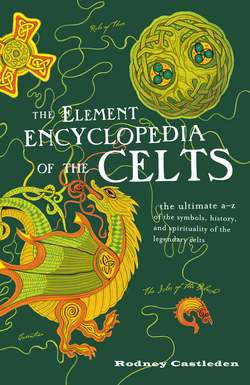Читать книгу The Element Encyclopedia of the Celts - Rodney Castleden - Страница 41
THE SYMBOLIC VALUE OF ARTHUR
ОглавлениеWhy did this particular king so fascinate his contemporaries and those who came after? The most immediate reason is that his military prowess halted the westward progress of the Anglo-Saxon colonization of southern Britain for 20 years. His time would afterward be remembered as the sunset of Celtic England. A distinctive feature of the Celts is dwelling on defeats; there is wailing, keening, lamentation, and nostalgia. A. L. Rouse commented, “It was the hero of the losing side, King Arthur, who imposed himself on the imagination.” Arthur became a symbol of the glory of Britain as it once was and might yet have been, but for its destruction by the Saxon invaders. He was the perfect symbol of a kingdom and a culture lost.
The image of the king hung over the aristocracy of the Middle Ages like a faded, tattered, war-torn battle standard hanging in a royal chapel, redolent of past greatness and signifying virtues that could never be matched by the living. The idea of Arthur became a force in politics. Henry II wanted to prove that Arthur was dead in order to remove any hopes the Celts may have nursed that he would rise again to do battle against the Plantagenets. It was probably for this reason that in 1190 Henry II arranged for Arthur’s coffin to be “discovered” at Glastonbury and exhumed. We know that, when Henry II visited Pembrokeshire in 1179 and met the bard who told him where Arthur’s grave was, he was also told of the tradition that Arthur would ride once more. If Henry could produce Arthur’s bones, even the most superstitious would be able to see that there was no chance of Arthur riding again.
King Edward III identified himself as Arthur’s successor when he contemplated re-establishing the Round Table as an order of chivalry. In the end, in 1348, he founded the Order of the Garter instead, but still in imitation of King Arthur’s order of Round Table knights.
